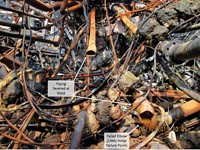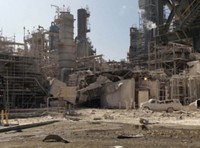Advertisement
Grab your lab coat. Let's get started
Welcome!
Welcome!
Create an account below to get 6 C&EN articles per month, receive newsletters and more - all free.
It seems this is your first time logging in online. Please enter the following information to continue.
As an ACS member you automatically get access to this site. All we need is few more details to create your reading experience.
Not you? Sign in with a different account.
Not you? Sign in with a different account.
ERROR 1
ERROR 1
ERROR 2
ERROR 2
ERROR 2
ERROR 2
ERROR 2
Password and Confirm password must match.
If you have an ACS member number, please enter it here so we can link this account to your membership. (optional)
ERROR 2
ACS values your privacy. By submitting your information, you are gaining access to C&EN and subscribing to our weekly newsletter. We use the information you provide to make your reading experience better, and we will never sell your data to third party members.
Safety
Safety Lapses At Chevron
A 2012 plant accident at a California refinery was preventable, report says
by Jeff Johnson
April 19, 2013
| A version of this story appeared in
Volume 91, Issue 16
Missed opportunities to apply inherently safer technologies, a failure to recognize and correct workplace hazards, and the lack of industrial safeguards led to an explosion, fire, and release of a huge vapor cloud at a California refinery in August 2012, says a federal report. The plume swept across a residential community near the Chevron refinery in Richmond, sending 15,000 people to area hospitals.
An interim analysis of the accident, released last week by the Chemical Safety & Hazard Investigation Board (CSB) blames the Chevron refinery’s management as well as a host of regulatory bodies for failing to take actions that could have prevented the accident.
Specifically, the cause of the accident was extremely corroded carbon steel piping that ultimately ruptured in a crude oil processing unit, according to CSB. Chevron was aware of the corroded piping for a decade and failed to correct it, CSB notes.
Under Chevron’s inherently safer technologies policy, the pipe should have been replaced with one made of a less reactive material, such as stainless steel. The use of inherently safer technologies is encouraged by city, county, state, and federal regulations but not required, CSB says.
Chevron last week issued its own accident report, acknowledging failures to act on 2002 inspection reports that identified the corrosion. The company said it was enhancing its inspection programs.
But CSB notes that even when Chevron replaced the defective piping after the accident it still failed to use stainless steel piping.




Join the conversation
Contact the reporter
Submit a Letter to the Editor for publication
Engage with us on Twitter